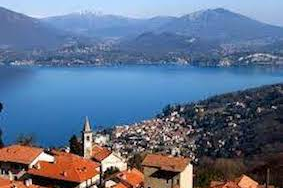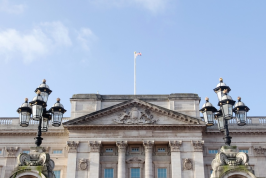60th Anniversary of John XXIII's Pacem in Terris

Pope John XXIII official portrait
Easter this year falls on 9th April - the exact date on which, 60 years ago, television stations and newspapers around the world carried images of Pope John XXIII signing his last encyclical, Pacem in Terris - Peace on Earth. In order to link the encyclical to the Holy Week celebration of the passion, death and resurrection of Christ - the event and mystery upon which the faith and hope of the church rests - Pope John actually assigned the encyclical the date of the 11th of April. In 1963 that was Holy Thursday, the beginning of the Paschal Triduum.
It is extremely difficult for us, many years later, to appreciate the impact of John's encyclical. At that time the Cold War between the West and the Soviet bloc had been intensifying. Work had begun, in 1961, on the construction of the Berlin Wall, whose declared purpose was to keep 'Western fascists', as they were termed, from entering and 'contaminating' the socialist states of eastern Europe. In practice, it served to block defections from East to West.
What was of widespread concern at the time was the imminent danger of nuclear war. In 1961 the Soviet Union had exploded 31 nuclear devices, including the largest thermonuclear device ever detonated. Nicknamed the Tsar Bomba, it was estimated to be at least 1,500 times more powerful than the atomic bombs dropped on Hiroshima and Nagasaki combined, the mushroom cloud resulting from the detonation rising almost eight times the height of Mount Everest.
The United States responded in 1962 by exploding 35 nuclear devices, approximately one every five days. It was, however, the thirteen days from the 15th to the 28th of October of the same year - the very weeks when the first session of the Second Vatican Council was getting under way in Rome - that caused shivers of acute anxiety around the world. Attention was focused on events in the Caribbean, close to the borders of Latin America - the perilous standoff between the United States and the Soviet Union known as the Cuban missile crisis, the closest the world has yet come to nuclear war between superpowers.
In those October days Pope John would certainly have been following developments in the Council that he had unexpectedly called into being three years before. He was, however, also very active - as were others - in seeking to provide channels of communication between the two superpowers in the hope of averting a catastrophe.
By 25th October he felt the time was right to make a public appeal for peace on Vatican Radio: "We beg all governments not to remain deaf to this cry of humanity. That they do all that is in their power to preserve peace … Promoting, favouring, accepting conversations, at all levels and in any time, is a rule of wisdom and prudence that attracts the blessings of heaven and earth".
Both sides in the dispute had, no doubt, been fully informed of what the pope was going to say: the next day his speech was printed on the front page of Pravda, the Soviets' official newspaper!
By the time the pope entered the fifth year of his pontificate at the close of 1962, he was highly respected - not only for his contribution to the resolution of the Cuban missile crisis, but also by the way he had opened up towards 'the other' whoever that 'other' might be, distinguishing carefully between what could be regarded as error and the persons who might be considered to err.
He was widely spoken of as 'the Good Pope"' His approach was characterised by a respect for others and a readiness to engage in dialogue, with other Christians, with other faiths, and beyond. He removed the phrase 'perfidious Jews' from the traditional Good Friday prayer, and reached out to the Jews, vividly aware of the deep links between Christian faith and Jewish faith. In January,1963, he was named 'Man of the Year, 1962' by Time magazine, a sign of the way he was widely regarded.
In a situation where nuclear confrontation was seen as threatening humanity, Pacem in Terris had enormous impact worldwide. Drawing on his Christian faith, John XXIII proposed a new world order to be built on the four pillars of truth, justice, love and freedom. He addressed his encyclical to all people of goodwill, and this sense of inclusiveness met with a wide and positive response. Perhaps no other social encyclical - with the possible exception of Pope Francis' Laudato Si' - has garnered such wide attention beyond the membership of the Church, with the UN itself holding a conference to study Pacem in Terris.
The spirit of inclusiveness that permeated the encyclical, with its thorough-going affirmation of the dignity of every human person and a detailed outline of human rights that follow from that recognition, also had a profound effect on the Second Vatican Council and upon his successors as pope. Paul VI's address to the General Assembly of United Nations in October 1965 - the first pope to do so - took place within the atmosphere that John had helped make possible. In 1967 Paul VI, following the logic of Pacem in Terris, instituted the World Peace Day, to be celebrated by the church on the first of January each year. The messages of the popes each year since that time constitute a valuable body of Christian teaching on the many dimensions of peace.
In an interview five years ago, linked to a temporary return of St John XXIII's body to his home diocese of Bergamo, Pope Francis said that Pacem in Terris still stands as "a permanent commitment to peace". The task of the Church, said Francis, is not to "make governments change, but to bring the logic of the Gospel into the thinking and gestures of those who govern".
Pope Francis' unceasing appeals - week after week over the last year - for peace in Ukraine and his denunciations of what he describes as this "absurd and cruel war" echo the stance of his predecessors towards violent conflict. At the same time, in order to maintain a credible position that might allow for mediation between the two sides in the war and a cessation of hostilities, the pope has said - seeking a delicate diplomatic balance whereby he does not take sides - that he will not visit Kyiv if he is not also able to visit Moscow. As leader of a church that is now more truly global than ever before, Francis is aware of the many ways the conflict is seen and interpreted in different parts of the world. While vehemently denouncing the horrors of the war and seeking for ways to bring it to an end, he is also careful to avoid being identified with any particular political grouping of nations, east or west, north or south. His approach calls to mind the difficult but balanced approach of St John XXIII and his Pacem in Terris, 60 years after its publication.
Dr Peter Coughlan was Under-Secretary of the Pontifical Council for the Laity from 1980 to 1991. During this period, he was also a consultor of the Pontifical Council for Promoting Christian Unity, and a member of the Joint Working Group between the Roman Catholic Church and the World Council of Churches (headquartered in Geneva). In recent years Peter has taught ecclesiology, ecumenism and ethics at Heythrop College, University of London. Peter is Senior Fellow at Margaret Beaufort Institute of Theology, Cambridge.


















